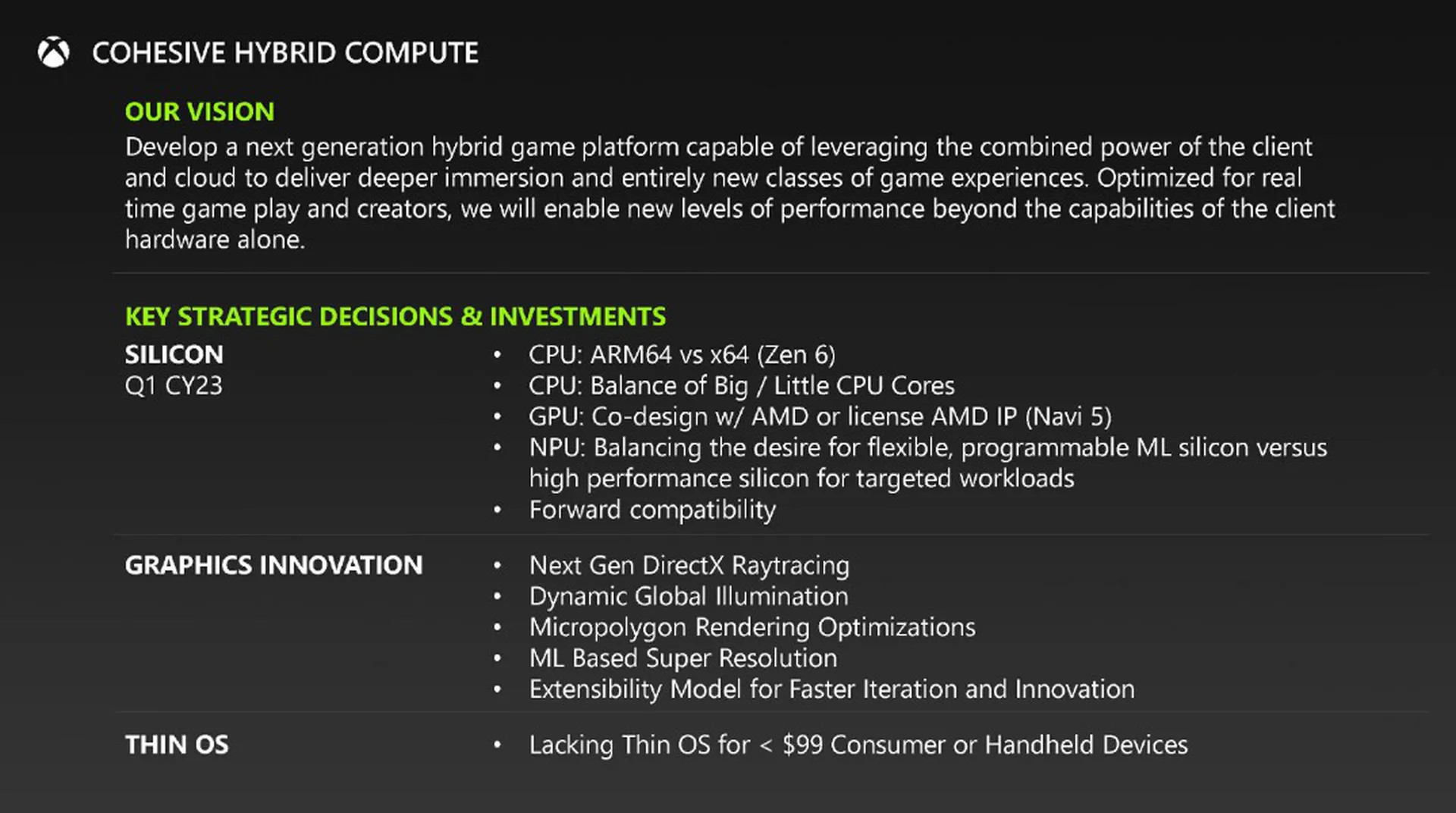The thin OS in the leaked slides was meant for the streaming device.
What MS will likely do is a gaming SKU of Windows 12, licensed only to OEMs, which is basically a converged Windows/Xbox OS with differing functionality exposed to userbase based on the type of form factor.
Steam/Epic games are unpackaged Win32 games created by the Windows SDK (+additional Steam or Epic SDKs).
MS unified game development for PC, Consoles, Cloud in June 2019 with the GDK when targeting the Xbox ecosystem.
Microsoft Public GDK. Contribute to microsoft/GDK development by creating an account on GitHub.

github.com
The GDK creates MSIXVC packaged Win32 games that are then run inside a Type 1 hypervisor (low level VM). The GDKX is basically GDK + Console specific extensions used to optimize for Console hardware.
Current Windows 11 Home can run both unpackaged Steam/Epic games, and MSIXVC packaged Xbox games. (Xbox PC aka MS Store/PC Gamepass).
Xbox OS runs XDK (Xbox one aka ERA model on WinRT API) created games, and GDKX created and optimized Series games. The XDK was also gobbled up by the GDKX for One consoles.
So now the main work for MS is to converge full windows with Xbox OS APIs and shell. (Or they can run Xbox OS as a subsystem, quicker path).
The newer converged OS will be able to run Windows SDK games, GDK games but also GDKX and XDK games when it's running on the Xbox designed AMD APUs in the Xbox family of devices. That's how they guarantee full Console library compatibility and BC with what's currently available on Series consoles.
So MS and OEMs are basically doing 5 form factors. Xbox PCs, Xbox Laptops, Xbox Consoles, Xbox Handhelds, Xbox Cloud. All running on that converged OS, and AMD APUs. The Console will likely not have a desktop mode and file system access or it will be hidden. That way the Xbox PCs could be sold at a higher price point.















